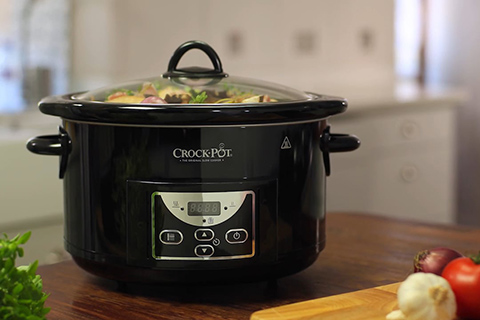Pressure cooking may sound like a science experiment, but this relatively new way to cook is probably healthier than the open fires our ancestors used.
Some people still argue that pressure cooking is bad for your health, but new studies and evidence show that the opposite is true.
1. Pressure Cooking Actually Preserves Nutrients
If you thought high pressure also means high temperature and more nutrient loss, you’re not alone. Many people assume a quicker cook time means using higher heat, but it’s the increased pressure – not temperature – that cooks the food more quickly.
One study from 1995 found that pressure cooking actually preserved more nutrients than most other forms of cooking.
Another study measured the levels of B-Vitamins and Vitamin C (which are vulnerable to heat) in foods after cooking. The study found that:
- Roasting and steaming preserved up to 90% of the nutrients
- Boiling reduced the nutrients by 40-75%
- Pressure cooking preserved 90-95% of nutrients
Pressure cooking uses a slightly higher temperature, but the quicker cooking time means there’s less time for nutrient loss.
Pressure cooking may actually be one of the healthiest ways to cook because your foods are more nutrient-rich.

2. More Digestible Proteins and Less Phytic Acid and Lectins
The health community is still debating whether grains are actually healthy. Why? Because of one important antinutrient: phytic acid and lectins.
The lectins and phytic acid in grains and legumes prevents our bodies from absorbing many of the beneficial nutrients in these foods. They also irritate the digestive system and can even leech nutrients from the body.
Lectins and phytic acid protect plants by allowing them to be passed through our bodies unharmed. But they can also be harmful to our bodies in large quantities.
Pressure cooking actually reduces phytic acid and lectins in grains and beans, making more of their nutrients available to our bodies.
One study found that when peas were soaked overnight and then cooked in a pressure cooker, phytic acid levels were reduced by 54%. Boiling only reduced the phytic acid by 29%.
Along with reducing antinutrient levels, pressure cooking also makes proteins more digestible. The high-pressure environment alters proteins to make them more easily digestible. That same study we just mentioned also found that pressure cooked peas had 85% protein, while conventionally cooked peas had just 80% protein.
3. Fewer Cancer-Causing Compounds
Foods cooked over an open flame may have that smoky flavor we love, but it’s that very same flavor that may be hurting our health.
Cooking foods over an open flame, in the oven or on the stove top can produce acrylamide. Acrylamide is considered a carcinogenic compound and can cause cancer, according to the National Cancer Institute.
High cooking temperatures and overcooking foods leads to higher acrylamide levels.
Swiss researchers found that pressure cooking potatoes produced virtually no acrylamide.
4. Reduced Cooking Time Means Less Temptation
Pressure cooking reduces cooking time – by up to 70%. According to dummies.com, chicken can cook in just 10-12 minutes, while a whole roast can cook in just 40-60 minutes.
Brown rice cooks in 15-20 minutes versus the usual 40-minute cook time on the stove.
When cooking is quick and easy, it’s much easier to avoid the temptation of fast and frozen foods. With a pressure cooker, you can have dinner on the table in less than 20 minutes.
Many pressure cooker cookbooks include recipes for one-pot meals, which cook even quicker and require virtually no clean-up.
In the video below, this YouTuber cooked dried pinto beans in a pressure cooker in just 30 minutes. It would take hours to cook dried – not soaked – pinto beans on the stove top.
https://www.youtube.com/watch?v=fTMsJj6ddRQ
If you lead a busy lifestyle, a pressure cooker will allow you to stay healthy by cooking at home without forcing you to waste your entire evening cooking.
5. Reduced Risk of Food-Borne Illnesses
Part of the reason why humans cook their food is because it kills harmful bacteria. When food is cooked to 140 degrees F, it kills most bacteria. Some foods, like poultry, must be cooked to a higher temperature for them to be considered safe. That’s where things can get sticky.
It’s easy to slightly undercook a piece of chicken, which can leave you with food poisoning.
But as Scientific American explains, pressure cooking is one of the best ways to kill food-borne germs. The big food industry often uses high pressure environments to sterilize.
A pressure cooker is a healthy, safe way to cook nutrient-rich foods without having to spend hours slaving over the stove. With the ability to reduce phytic acid levels and lectins, you can enjoy healthy foods – even grains – without sacrificing nutrients. And there’s no need to worry about harmful acrylamide with a pressure cooker.
If you’re still debating over whether to buy a pressure cooker, you’re missing out on these five health benefits.

